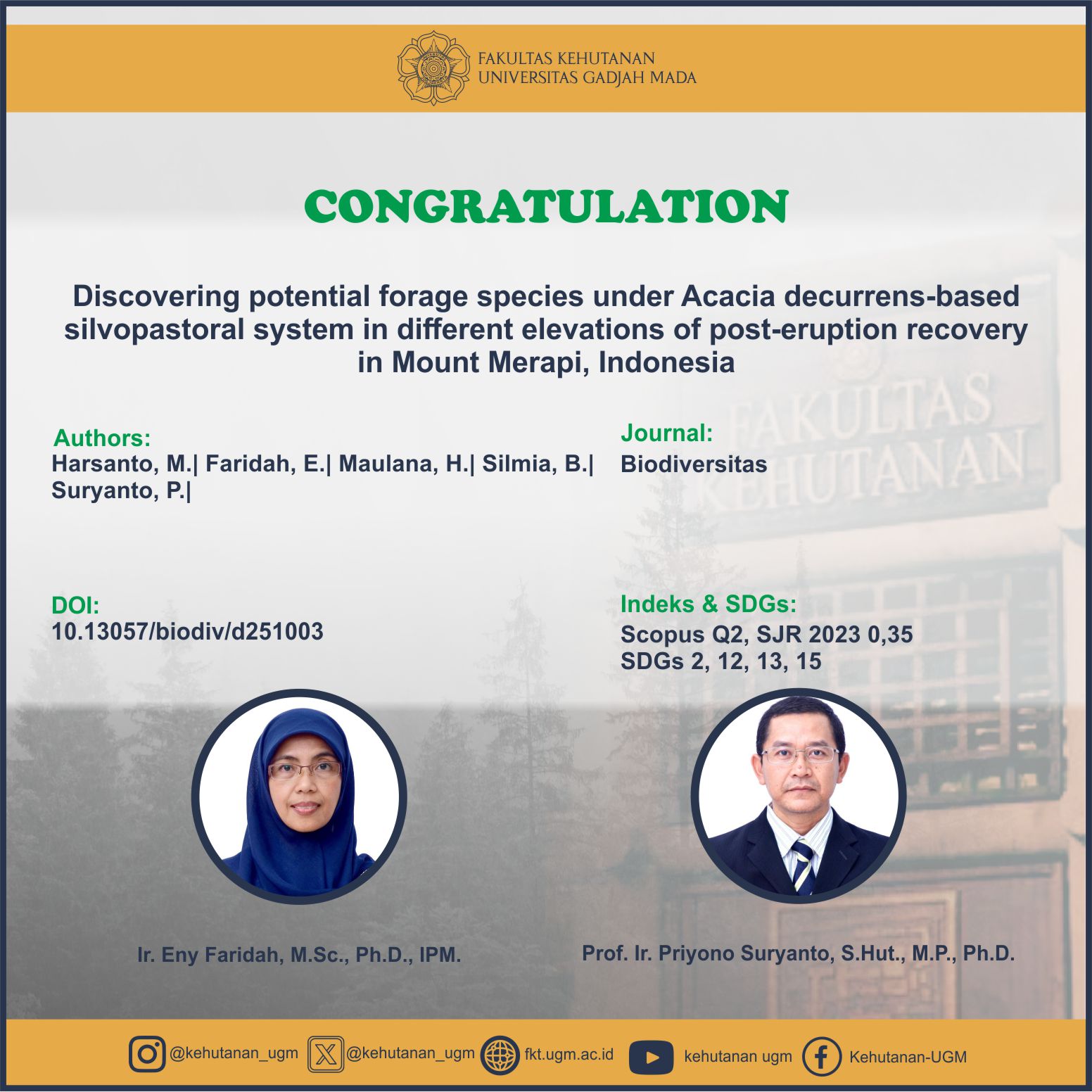
Abstract
The devastating eruption of Mount Merapi, Indonesia, in 2010 resulted in the alteration of vegetation composition and structure across the exposed area, and it has been invaded by Acacia decurrens Willd. ever since. Nevertheless, A. decurrens provides a suitable agroecosystem for silvopasture, which has been considered the essential source of income for the society around Merapi. This research aims to observe the diversity and potential forage species under silvopastoral systems in different elevations. The study was conducted in three villages located at different elevations viz. Kalikuning (820 masl), Kaligendol (890 masl), and Balerante (1,100 masl). There were 15 research plots for vegetation survey built in each location based on purposive sampling. A nested design (20 m × 20 m), comprised of 5 subplots, was employed to observe the distribution of A. decurrens and understory species. The study observed that A. decurrens was the only shade tree in all locations. The average of A. decurrens in all growth stages for each location ranges from individuals ha-1. There were 33 understory species of 13 families observed in all locations. The highest number of understory species was observed in Kaligendol (20 species), followed by Kalikuning (16 species) and Balerante (10 species). Similarly, Kaligendol showed the highest species richness (Dmg = 3.16). However, the highest heterogeneity (H’ = 1.98) and evenness (J’ = 0.71) was recorded in Kalikuning. There were 61% and 9% of understory species classified as palatable and unpalatable, respectively. Stand management, such as enrichment planting and regular pruning, is required to maintain the sustainability and productivity of silvopasture in the post-eruption areas.
SDGs:
SDG 2:Zero Hunger
SDG 12:Responsible Consumption and Production
SDG 13:Climate Action
SDG 15:Life on Land
Link Dokumen:
Download
